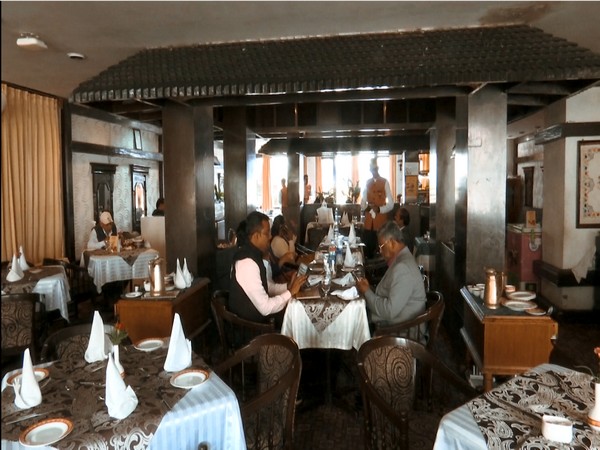
New Delhi: The global hotel industry was severely impacted by the COVID-19 pandemic. Strict travel restrictions imposed by countries trying to curb the spread of Covid had a significant impact on supply chains and income for hotels, restaurants, travel, and other leisure activities.
After a two-year slump, the sector is gradually returning to pre-pandemic levels. The Indian hospitality industry has particularly accelerated with the government's renewed push to bring attention to the country's underexplored diverse ecosystem, vast heritage and culture. India's Ministry of Tourism emphasised domestic tourism promotion and launched the Dekho Apna Desh initiative. The Ministry also announced various fiscal relief measures to revive the tourism sector after the pandemic.
The government's initiatives to revive the sector have resulted in record tourist footfall in the Union Territory of Jammu and Kashmir. According to the Information and Public Relations of the J&K government, around 16.2 million tourists have visited the region since January this year.
"So many tourists from different parts of the country and internationally are coming into Kashmir this year. I think it is wonderful to see so many tourists enjoying, we have ensured that our tourist gets the best facilities and our major tourism players have played a major role in this", said Peer Haseen, Director of Tourism J&K.
Many other Indian states too are experiencing an upsurge in the number of visitors and travellers.
As per the ICRA report, the number of tourists in Goa has exceeded pre-Covid levels since September 2021.
"Goa is back with a bang, welcoming tourists back with open arms. Be it chartered tourists, foreign tourists coming on FIT (Free Independent Travellers) or Domestic tourists, who have made Goa their first tourism destination in India. Just like our Chief Minister calls it the Tourism Capital of India", said Nilesh Shah, President of Travel and Tourism Association, Goa.
According to the Investment Information and Credit Rating Agency (ICRA) the Indian hotel industry started off on a promising note this fiscal year with the country's luxury hotels registering 56 to 58 per cent occupancy in the first quarter even though it is not peak travel season.
Centrally supported initiatives like The National Strategy for Sustainable Tourism and Responsible Traveller Campaign and the National Integrated Database of Hospitality Industry (NIDHI 2.0) have made travel and tourism even more organised and accessible.
Leaders in the tourism industry have been extremely pleased with the government's active response during and in the aftermath of the pandemic.
"Indian Hospitality Industry has enjoyed moderate growth over the past couple of years but there is certainly some great potential that lies ahead. This is a nation that is rich in culture and diversity and the World Economic Forum ranked India in its Tourism Competitive Index 65th in 2013 which is grown to 34th in 2019, now that the recovery is well and truly underway, I am sure that this number will rise in the future," said Ronan Fearon, General Manager of JW Marriott, Bengaluru.
India Brand Equity Foundation predicts that the Indian Travel Market will grow to USD 125 Billion in the 2027-28 fiscal year.
Moreover, International visitors are anticipated to total 30.5 billion by 2028, bringing in more than USD 59 billion in revenue.
Despite the initial slowdown with the Covid-19 pandemic, the sector's growth outlook is positive, with revenues on a sharp upward trajectory.
With a focus on the country's rich heritage, planned expansion, and steady rise in hospitality standards, India has loudly announced to people worldwide that no matter where you are, India is ready to welcome all.